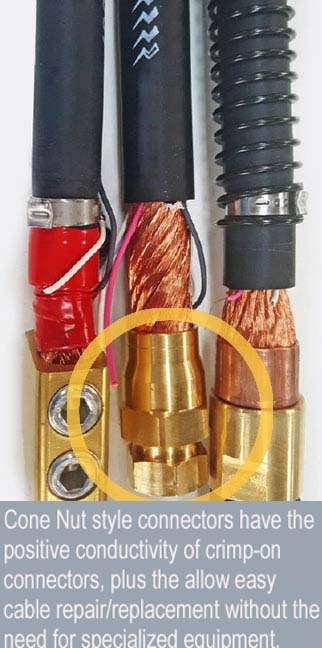How to Troubleshoot your MIG Welding Cable Problems

MIG Cable Problems – Symptoms, Causes and Fixes
TROUBLE BREWING
Here are a few symptoms you might notice when using your welding equipment.
• Erratic or sputtering arc
• Gradual need to increase the voltage at the power source
• Discoloration of the liner
• Contact tip burn back
• Inconsistent weld appearance
All indicate poor MIG welding cable conductivity and excessive resistance that can lead to heat build-up.
TOO HOT TO HANDLE
Excessive resistance is often the result of repeated bending, stretching, and flexing that happens during welding with handheld equipment. This breaks the internal copper strands, resulting in a loss of conductivity, which creates more resistance. It becomes a spiraling cycle of copper strand damage, then increased resistance and heat build-up, which leads to yet more strand damage.
RELATED: Everything You Need To Know About MIG Welding Nozzles
FIRST – CHECK THE CONNECTIONS
Are all the power connections clean and tight? Check the power pin, gun and ground clamp connections. Ruling out these issues first is important because the symptoms of a loose connection are similar to those of damaged cable.
SECOND – LOOK FOR CLUES
• Are there any visible cuts, abrasion, kinks or flat spots in the cable?
• Is the cable hotter in some areas than in others?
• Is the cable more flimsy in some places?
• Has the liner become discolored in some areas?
Any of these clues indicate that a section of the cable has deteriorated. If the degraded area is near the front end or gun end, it’s possible to shorten the cable, otherwise, the entire cable will need to be replaced.


